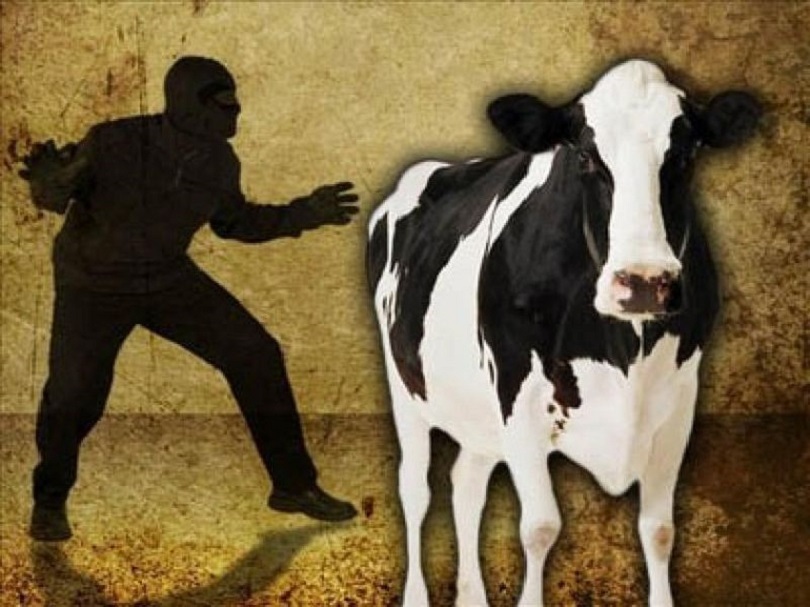
It may not be considered a serious crime by many, but cattle theft remains the case of snatched livelihood for the victims.
By Tabia Masoodi, Al-Misda Masoom
AT the break of dawn on February 3, 2022, Mohammad Yaqoob fought shivering cold and slippery slopes while returning to his home in Khrew area of Pulwama.
Accompanied by a Kashmiri Wazwan chef, he was going to prepare meals for his grieving sister whose daughter had lately passed.
For the two consecutive nights before his morning arrival, the simpleton was away from his locked home lamenting the loss of his niece. But little did he know that he would’ve to grieve for his lost livelihood as well.
The moment he reached the gates of his home, he cried in despair, “Taawan Chu Pyumut” (We’re doomed!)
While Yaqoob was away, the thieves broke into his barn and robbed his 24 sheep.
“I’m left with nothing,” lamented Yaqoob’s wife. “This livestock was the only source of income for us. I don’t know how we will manage our living now.”
Barely five days after Yaqoob’s barn was burgled, Police Station Safakadal received information regarding attempt of cattle theft at Takanwari area of Noorbagh, Srinagar.
When the police party reached on spot, a large gathering had caught hold of the suspects. Timely intervention of cops saved the “thieves” from possible mob-lynching.
Booked under the FIR NO 18/2022 u/s 380/511 IPC, the suspects—Manzoor Kumar and Altaaf of Budgam, and Nazeer Chopan and Irfan Kataria of Kangan—were arrested along with Tata Mobile White JK01G 4980.
“During questioning the suspects admitted various cattle thefts in different area of the valley,” police said. “More arrests and recoveries are expected.”
Rising Robbery
Over the years the cases of cattle theft have seen a significant surge in Kashmir.
According to the data compiled by the Crime Branch Kashmir, the number of cattle theft cases stands at 111 for the year 2020 against 92 in 2019.
While the fresh figures remain a work in progress, many don’t consider cattle theft a serious crime—but the victims lament over the looted livelihood.
Gangs At Play
Dairy farmers believe that there’s an intra-district organized gang behind all the thefts.
The stolen cattle from North Kashmir, they say, are transported to the South Kashmir and vice-versa.
In past, such organized barn break-ins had become a flashpoint of fury in the valley.
When scores of cattle theft incidents rocked South Kashmir in early 2016, villagers staged a massive protest decrying how cattle smugglers stole sheep, cows and oxens in broad-day light.
“But since then we’ve busted many gangs of cattle thieves in south Kashmir,” a senior police officer told Kashmir Observer. “During sustained interrogation, the accused accepted their involvement in other similar cases.”
While the frequency of these cases is high, the officer said its conviction rate is equally high. “A victim of these thefts was served justice in Kulgam district in March 2021 where police had arrested one person and recovered cattle worth lakhs from his possession.”
Case of Concern
However, Bashir Malik, a labourer from Budgam, says his stolen cattle worth Rs 1.30 lakhs is nowhere to be found.
He lost his six sheep and a bull in a barn burglary in July 2021.
“I had purchased those animals from a few local farmers and had planned to sell them off on Eid-ul-Adha to make a little extra money,” Bashir said.
“I didn’t know I would end up having an unhappy festival.”
Similarly, five cows including calves were stolen from the barn of Abdul Ahad Dar of Kunsoo, Shopian in September 2021. The family got to know about the theft the next morning when they went to milk the cows.
After searching almost the entire area, the family gave up. In a similar incident at Sugan village of Zainapora area of Shopian, a dozen cattle were stolen.
“Not everyone gets their cattle back,” Ahad said. “And given the frequency of these thefts, many farmers have given up the idea of cattle rearing now.”
Follow this link to join our WhatsApp group: Join Now
Be Part of Quality Journalism |
Quality journalism takes a lot of time, money and hard work to produce and despite all the hardships we still do it. Our reporters and editors are working overtime in Kashmir and beyond to cover what you care about, break big stories, and expose injustices that can change lives. Today more people are reading Kashmir Observer than ever, but only a handful are paying while advertising revenues are falling fast. |
| ACT NOW |
| MONTHLY | Rs 100 | |
| YEARLY | Rs 1000 | |
| LIFETIME | Rs 10000 | |













